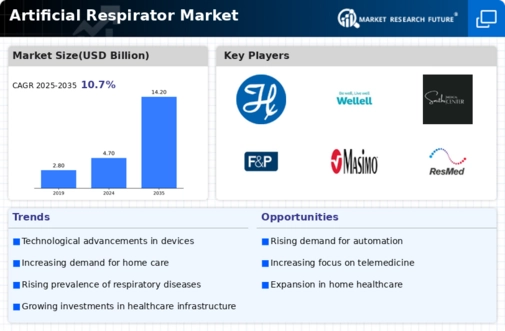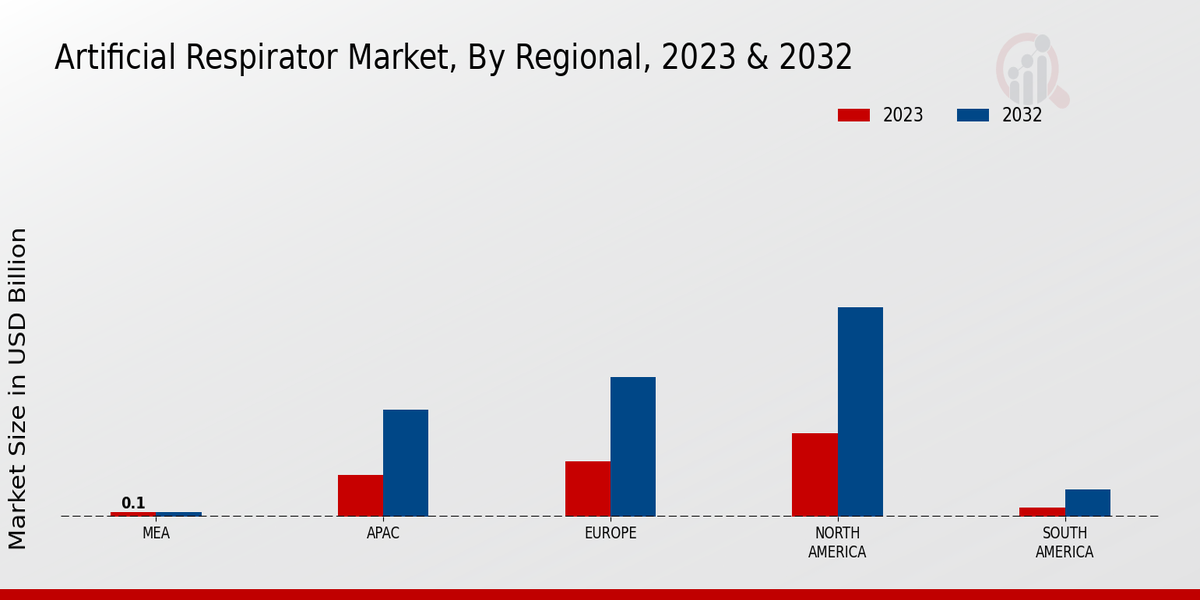Market Growth Projections
Regulatory Support and Standardization
Regulatory bodies are increasingly focusing on the standardization and approval processes for artificial respirators, which is beneficial for the Global Artificial Respirator Market Industry. Streamlined regulations facilitate quicker access to innovative respiratory devices, ensuring that healthcare providers can utilize the latest technologies. This regulatory support is crucial in maintaining high safety and efficacy standards, which in turn boosts market confidence. As the industry adapts to these regulatory changes, it is expected to experience sustained growth, aligning with the projected market valuation of 14.2 USD Billion by 2035.
Rising Prevalence of Respiratory Disorders
The increasing incidence of respiratory disorders globally drives the demand for the Global Artificial Respirator Market Industry. Conditions such as chronic obstructive pulmonary disease, asthma, and pneumonia are becoming more prevalent, necessitating advanced respiratory support systems. According to health statistics, respiratory diseases account for a significant portion of global morbidity and mortality. This trend is likely to escalate the need for artificial respirators, which are essential in critical care settings. As the market evolves, the industry is projected to reach a valuation of 4.7 USD Billion in 2024, reflecting the urgent need for effective respiratory management solutions.
Technological Advancements in Respiratory Devices
Technological innovations in artificial respirators are transforming the Global Artificial Respirator Market Industry. Enhanced features such as smart monitoring, automated adjustments, and integration with telemedicine platforms are improving patient outcomes and operational efficiency. These advancements allow healthcare providers to deliver personalized care, which is increasingly important in intensive care units. The market is expected to grow significantly, with projections indicating a rise to 14.2 USD Billion by 2035. This growth is driven by the continuous development of sophisticated devices that cater to the evolving needs of healthcare systems worldwide.
Growing Awareness and Training in Respiratory Care
There is a growing emphasis on respiratory care education and training among healthcare professionals, which positively influences the Global Artificial Respirator Market Industry. Enhanced training programs ensure that medical staff are proficient in using advanced respiratory devices, thereby improving patient care quality. This trend is particularly evident in developing regions where healthcare infrastructure is evolving. As awareness increases, the demand for artificial respirators is likely to rise, supporting the market's expansion. The integration of training initiatives with technological advancements further solidifies the role of artificial respirators in modern healthcare.
Aging Population and Increased Healthcare Expenditure
The global demographic shift towards an aging population is a critical driver of the Global Artificial Respirator Market Industry. Older adults are more susceptible to respiratory diseases, leading to a higher demand for artificial respirators in healthcare facilities. Additionally, increased healthcare expenditure in many countries supports the acquisition of advanced medical technologies, including respiratory devices. As healthcare systems adapt to the needs of an aging population, the market is poised for substantial growth, with a projected compound annual growth rate of 10.61% from 2025 to 2035, indicating a robust future for artificial respirators.



















